(This Article has been revised, edited and added to, by Poulomi Chakraborty.)
In an era where consumers are bombarded with endless streams of digital communication, sending generic, one-size-fits-all emails simply won’t cut it. Today’s discerning customers demand personalization, and to achieve that, marketers must evolve their strategies, diving deeper than surface-level demographics. Enter behavioral email segmentation, the next frontier in bespoke marketing.
For business leaders, whether at a fledgling startup or steering the ship at a large corporation, understanding and implementing behavioral email segmentation is no longer just an advantage—it’s a necessity. With this definitive guide, we aim to arm you with the knowledge and actionable strategies required to harness the power of behavioral segmentation and, in turn, boost your email marketing ROI, foster meaningful relationships, and elevate brand loyalty. Let’s embark on this journey.
- Understanding Behavioral Segmentation
- Why Behavioral Segmentation?
- Core Behavioral Metrics to Track
- Setting the Foundation: Data Collection & Analysis
- Strategies for Behavioral Email Segmentation
- Crafting Tailored Content for Each Segment
- Measuring the Success of Behavioral Segmentation
- Potential Challenges and Their Solutions
- Wrapping it up
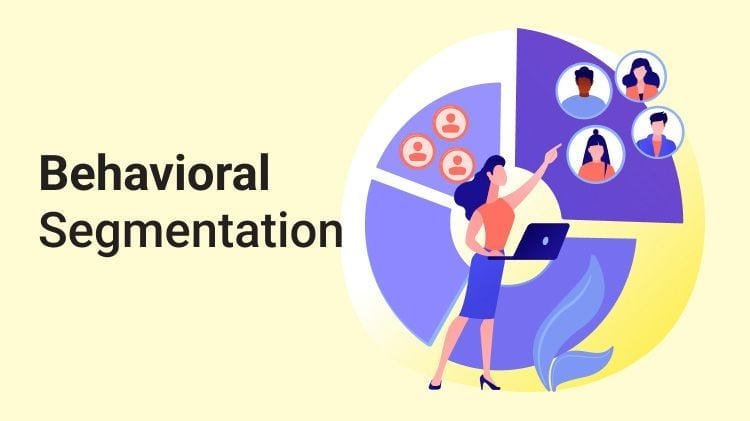
Understanding Behavioral Segmentation
Behavioral segmentation is the process of categorizing your audience based on their interactions with your brand, whether that’s through your website, your product, or any other channel. This method differs significantly from traditional demographic (age, gender, etc.) or geographic (location-based) segmentation. While traditional methods group users based on who they are, behavioral segmentation focuses on how they behave.
Why Behavioral Segmentation?
The question arises: Why should brands shift towards behavioral segmentation when other methods have been the mainstay for years?
- Higher Relevance: Behavioral segmentation ensures that the content you send resonates more deeply because it’s based on actual actions, preferences, and habits. For instance, a user who has just abandoned a cart on an e-commerce site might be more receptive to an email nudging them to complete the purchase than a generic promotional email.
- Improved Engagement: Emails tailored to specific behaviors tend to see higher open rates and click-throughs. Consider, for example, the efficacy of an email sent to a user who recently viewed a specific product category, showcasing top products from that category.
- Enhanced Customer Loyalty: By acknowledging and responding to user behavior, brands can make consumers feel seen and valued, fostering stronger brand loyalty.
Enhanced Predictive Analysis for Future Campaigns
Behavioral segmentation not only provides insights into past and current consumer behaviors but also empowers startup founders with predictive analysis capabilities. By analyzing patterns and trends within different behavioral segments, founders can forecast future consumer actions with greater accuracy. This foresight allows for the development of highly targeted marketing strategies that anticipate consumer needs and behaviors before they manifest.
Implement machine learning algorithms to analyze behavioral data segments. Use these insights to predict future consumer actions and tailor your email marketing campaigns accordingly. This could involve predicting seasonal trends, product preferences, or the likelihood of a customer to engage with a particular type of content.
Customized Product Development and Improvement
Startups can use insights gained from behavioral segmentation to inform product development and improvement processes. Understanding the nuances of how different segments interact with your product can highlight areas for enhancement or opportunities to develop new features that meet the specific needs of your audience.
Regularly review behavioral data to identify features or services that certain segments frequently use or express interest in. Use this data to guide your product development roadmap, focusing on innovations that address the preferences and behaviors of your target segments.
Increasing Customer Lifetime Value (CLV)
Behavioral segmentation allows startups to identify high-value customers and develop targeted strategies to increase their Customer Lifetime Value (CLV). By understanding the behaviors that indicate a customer’s high value, startups can nurture these relationships with personalized communication, exclusive offers, and early access to new products or features.
Identify behaviors that correlate with high CLV, such as repeat purchases, high engagement rates, or advocacy (e.g., referrals). Tailor your email marketing efforts to these segments with loyalty programs, VIP content, and other incentives that reward and encourage ongoing engagement.
Streamlining Customer Support and Satisfaction
Behavioral segmentation provides insights that can help startups streamline their customer support efforts, ensuring that resources are allocated efficiently to address the needs of different customer segments. By understanding the common issues or questions different segments have, startups can proactively address these in their communications, reducing the need for direct support and increasing customer satisfaction.
Analyze customer support interactions to identify common themes or issues within each behavioral segment. Develop targeted email campaigns that provide solutions, tips, or resources addressing these specific concerns, potentially reducing the volume of support queries and improving customer satisfaction.
Foster Community and Brand Advocacy
Leveraging behavioral segmentation to identify and engage with brand advocates can significantly enhance word-of-mouth marketing and community building. Startups can tailor communications to encourage and reward these behaviors, turning satisfied customers into vocal supporters.
Identify segments that show high engagement and positive sentiment towards your brand. Engage these customers with opportunities to share their experiences through testimonials, social media shares, or participation in referral programs. Offer incentives that align with their behaviors and preferences to encourage advocacy.
By maintaining a strong sender reputation, our emails reach the right recipients, leading to maximized open rates.
Chris Stott
Director- Seven Marketing
Core Behavioral Metrics to Track
To kickstart your behavioral segmentation journey, understanding which metrics to track is pivotal. Here are some core behaviors that can offer insights:
- Website Visits: Does the user visit often? Which pages do they spend the most time on?
- Purchase History: What has the user bought in the past? How frequently do they make purchases?
- Cart Abandonment: Did the user add items to their cart and then leave without purchasing?
- Email Engagement: How often does the user open your emails? Do they click on the links inside?
User Engagement Depth
Beyond simply tracking website visits and email engagement, understanding the depth of user engagement offers profound insights into consumer behavior. This metric assesses the quality of interaction by measuring how deeply users engage with your content, whether through reading time, video views, or interactive elements within emails or on your site.
Implement tools to track the time spent on specific pages, video engagement rates, and interactions with quizzes or polls. Use this data to segment your audience based on engagement depth and tailor your content strategy to increase or maintain high engagement levels. For instance, users with high engagement depth might receive more detailed, long-form content, while those with lower engagement could receive more interactive, easily digestible content to boost their engagement.
Conversion Paths
Understanding the paths users take before converting can shed light on the effectiveness of your marketing funnel and highlight potential areas for optimization. This metric traces the journey of a user from their first interaction with your brand to the point of conversion, mapping out the touchpoints that influenced their decision.
Utilize conversion path analysis tools within your analytics software to identify common routes to conversion. Analyze these paths for insights into which content types, product pages, or marketing messages are most effective at driving conversions. Tailor your email marketing to guide users along the most successful conversion paths, using targeted messages that encourage progression through each stage of the funnel.
Social Interaction Metrics
In today’s digital landscape, interactions on social media platforms can provide valuable insights into customer behavior and preferences. Tracking metrics such as shares, comments, and likes on content linked from your emails can offer a more holistic view of engagement and brand advocacy.
Include social sharing buttons in your email content and track the engagement these links receive on social platforms. Segment your audience based on their social interaction levels and tailor campaigns to encourage social sharing, such as exclusive content for those who share your content or participate in social media challenges related to your brand.
Customer Support Interactions
Analyzing interactions with customer support can offer unique insights into customer satisfaction, common issues, and potential areas for product improvement. Tracking metrics like the number of support tickets, reasons for contact, and resolution times can help tailor your email marketing to address common concerns or highlight solutions to frequent problems.
Integrate your customer support platform with your CRM to track support interactions as part of your behavioral segmentation. Use this data to segment customers based on their support needs and tailor your email communications accordingly. For example, if a segment frequently contacts support for help with a specific feature, send them targeted emails with tutorials or tips related to that feature.
Loyalty and Retention Metrics
For startups, retaining existing customers can be more cost-effective than acquiring new ones. Tracking loyalty and retention metrics such as purchase frequency, subscription renewals, or membership engagements can provide insights into customer satisfaction and long-term value.
Implement loyalty programs and track participation and engagement rates. Use this data to segment your audience based on loyalty behavior and develop targeted email campaigns that reward customer loyalty and encourage repeat business. This could include exclusive offers for your most loyal customers or early access to new products or services.
HubSpot’s advanced segmentation tools enable us to categorise our audience based on their interests and behaviours, ensuring that each email is relevant and tailored to their preferences.
Hayley Mollett
Marketing Co‑Ordinator- Better-II in the UK
Setting the Foundation: Data Collection & Analysis
Leveraging User Feedback Mechanisms for Richer Insights
Beyond traditional data collection methods, actively soliciting and analyzing user feedback can provide deep, qualitative insights into customer preferences, motivations, and experiences. This can complement quantitative data, offering a more nuanced understanding of your audience.
Incorporate feedback mechanisms such as NPS surveys, customer satisfaction surveys, and product review requests directly within your email campaigns. Utilize open-ended questions to encourage detailed responses. Analyze this feedback to identify trends and themes that can inform your segmentation strategy. For instance, you might discover specific features or products that resonate strongly with certain segments, enabling more targeted communication.
MailGuru’s detailed analytics and reporting tools enable me to monitor performance continually, allowing for data-driven improvements. This comprehensive approach has significantly increased our conversion rates and overall campaign success.
Ray Lauzums
Owner- Poggers
Utilizing AI and Machine Learning for Predictive Analytics
With the advancements in AI and machine learning, startups can now predict future customer behaviors with greater accuracy. These technologies can analyze vast amounts of data to identify patterns and predict future actions, such as purchase likelihood or potential churn.
Implement AI-driven analytics tools to sift through your behavioral data and predict future customer actions. Use these insights to create dynamic segments that automatically update based on predicted behavior changes. This allows for preemptive engagement strategies, such as targeting users predicted to churn with re-engagement campaigns or offering personalized product recommendations to those predicted to purchase.
Integrating Third-Party Data for Comprehensive Profiles
While first-party data is invaluable, integrating third-party data can enrich customer profiles, offering a more comprehensive view of your audience. This can include demographic information, interests, and behaviors collected by external sources, enhancing your segmentation capabilities.
Partner with reputable third-party data providers to supplement your own data collection. Ensure compliance with privacy regulations when integrating this data. Use the enriched profiles to refine your segmentation, creating more detailed and accurate segments that reflect broader customer characteristics and behaviors.
Advanced Analytics for Segment Evolution
Behavioral segments are not static; they evolve as customer behaviors change. Advanced analytics can help you monitor these changes in real time, allowing for dynamic adjustment of segments and marketing strategies.
Use advanced analytics platforms to continuously monitor segment performance and behavior changes. Set up alerts for significant shifts in segment behavior or engagement. Regularly review and adjust your segments based on this analysis to ensure your marketing efforts remain aligned with current behaviors.
Cross-Channel Data Synthesis for Holistic Understanding
Customers interact with your brand across multiple channels, not just email. Synthesizing data from all these touchpoints can provide a holistic view of customer behavior, improving the accuracy of your segmentation.
Ensure your CRM and analytics platforms can integrate data from all customer touchpoints, including social media, customer support interactions, and offline activities. Use this comprehensive view to develop segments that reflect the full spectrum of customer interactions with your brand. Tailor your email marketing strategies to these holistic behavioral insights, ensuring consistency and relevance across all channels.
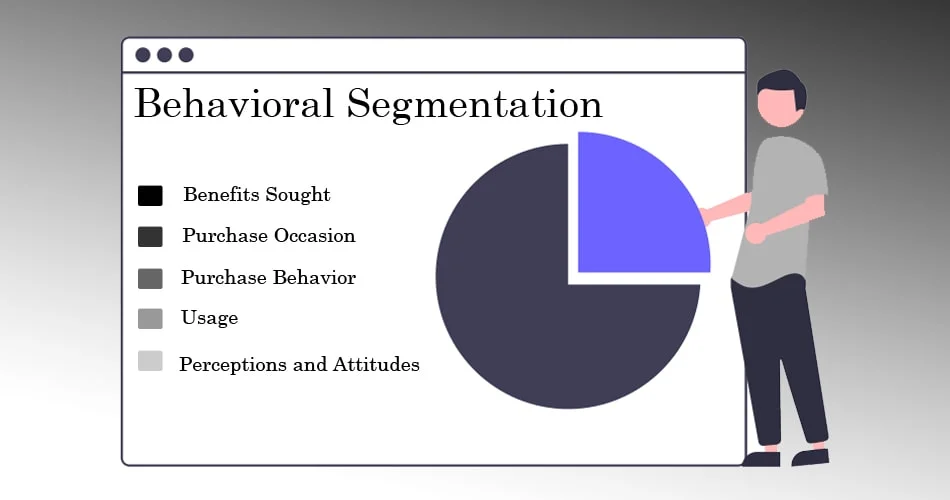
Strategies for Behavioral Email Segmentation
Segmentation Based on Purchase Behavior
Understanding the purchasing behavior of your audience can unveil a goldmine of opportunities for targeted marketing. Consider the following segmentation:
- Repeat Customers vs. First-time Buyers: Repeat customers already recognize the value of your brand. Tailoring emails with loyalty bonuses or exclusive previews can further cement their allegiance. Conversely, first-time buyers might benefit from welcome discounts or introductory brand stories.
- High Spenders vs. Low Spenders: High spenders exhibit potential for premium or upsell products, while low spenders could be enticed with special offers or showcase of value products.
I think it’s a great Email Marketing & SMS Platform. Omnisend, which is a sophisticated SMS and email marketing solutions for eCommerce organizations seeking omni-channel automation of marketing.
Gerrid Smith
Director of E-commerce- Joy Organics
Engagement Level Segmentation
Not all subscribers engage with your emails at the same frequency. Recognizing this can drastically improve your campaign effectiveness.
- Active Subscribers vs. Inactive Ones: Regular openers of your emails might be interested in more frequent updates or exclusive content. Meanwhile, a re-engagement campaign can be devised for those who haven’t opened emails in a while.
- Content Interactors vs. Passive Readers: Some subscribers actively click on links, watch videos, or partake in surveys. For them, more interactive content might be enticing. Passive readers, on the other hand, might benefit from a content revamp or different engagement strategies.
I place popups and forms throughout my blog to attract newsletter subscribers. These forms and popups are extremely easy to create and are mobile-friendly.
Ali
Blogger- Infoverses
Segmentation Based on Cart Abandonment
Shopping cart abandonment is a prevalent concern in e-commerce. Understanding the ‘why’ behind it can inform powerful email responses:
- Reasons Behind Abandonment: Was it due to high shipping costs? Product uncertainty? Or a convoluted checkout process?
- Tailored Follow-up Emails: If high shipping is the deterrent, consider offering a limited-time free shipping incentive. Uncertain shoppers could benefit from product testimonials or reviews.
Event-based Segmentation
Moments matter. Celebrating special occasions or acknowledging user milestones can foster brand affinity.
- Birthdays, Anniversaries, and Special Occasions: An exclusive discount or a personalized wish can go a long way in making the subscriber feel valued.
- User Milestones: Did they just complete a year since their first purchase? Celebrate with them! Offer exclusive deals or showcase new products to re-invigorate their interest.
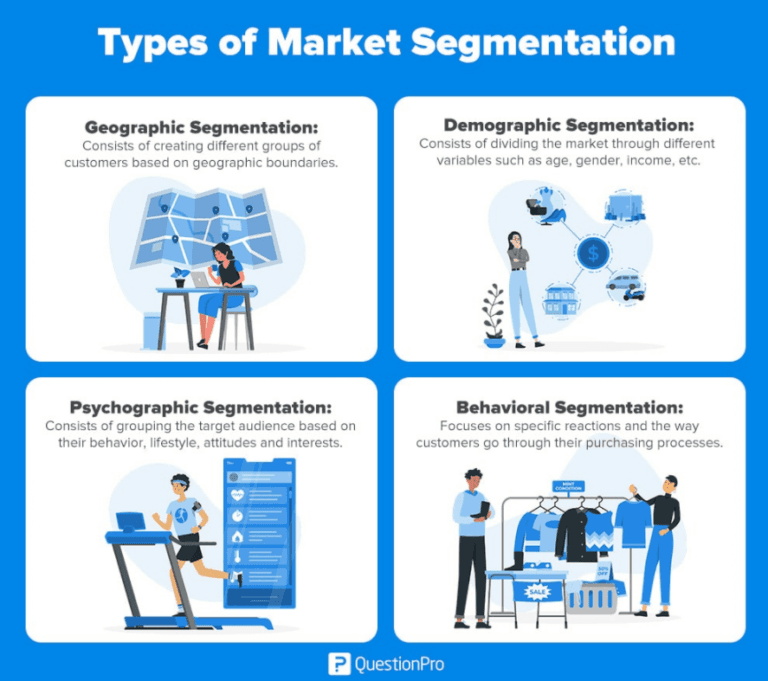
Crafting Tailored Content for Each Segment
Understanding Segment Preferences and Behaviors
The foundation of crafting tailored content is a deep understanding of each segment’s preferences, behaviors, and needs. This goes beyond basic demographic information to include psychographic and behavioral insights that reveal why customers behave the way they do.
Conducting In-depth Behavioral Analysis
Start by conducting an in-depth analysis of each segment’s interaction with your brand. This involves tracking metrics such as purchase history, email engagement rates, website behavior, and social media interactions. Utilize advanced analytics tools to identify patterns and trends within each segment, such as preferred product categories, content types that drive engagement, and common pain points or challenges.
Creating Persona-driven Content
Once you have a clear understanding of each segment’s characteristics, create detailed personas that represent typical users within each segment. These personas should include not only demographic information but also interests, values, goals, and behavioral triggers.
Leveraging Personas to Guide Content Creation
Use these personas as the basis for content creation, tailoring your messaging, tone, and offers to match the specific needs and preferences of each persona. For example, if a persona is highly value-driven, focus your content on showcasing the cost-effectiveness and value of your products or services. For another persona that values innovation, highlight the latest features and technological advancements of your offerings.
Segment-specific Content Formats
Different segments may prefer different content formats, ranging from text-heavy emails for detail-oriented users to visually rich content for more visual learners. Understanding these preferences is key to increasing engagement.
Experimenting with Diverse Content Formats
Experiment with a variety of content formats, such as video tutorials, infographics, blog posts, and interactive quizzes, to see what resonates best with each segment. Use email engagement metrics to track which formats drive the highest engagement rates and refine your content strategy accordingly.
I use MailChimp as our email marketing software. It is a great tool for businesses of all sizes, as it is user-friendly and provides great features such as automation, segmentation and A/B testing. I prefer MailChimp because it is cost-effective and allows us to easily customize our emails to suit our target audience.
Billy Parker
Director- Gift Delivery
Personalized Storytelling
Personalized storytelling can significantly enhance the impact of your email content. By weaving your products or services into narratives that reflect the experiences, challenges, or aspirations of each segment, you can create a more emotional and compelling connection with your audience.
Crafting Stories That Resonate
Identify common themes or experiences that resonate with each segment and craft stories around these themes. For instance, if a segment includes young professionals, you might share success stories of how your products or services have helped similar individuals achieve their career goals.
Email automation, drip promotion, surveys & polls, discount codes, online donations, and subject line A/B testing enable you to send targeted emails that raise open rates with their email Plus accounts.
Anthony Dutcher
Chief Marketing Officer- Veriheal
Dynamic Content for Real-time Personalization
Dynamic content technology allows for real-time personalization of email content, ensuring that each recipient receives the most relevant and up-to-date information based on their latest interactions with your brand.
Implementing Dynamic Content in Emails
Incorporate dynamic content blocks in your emails that automatically update based on the recipient’s behavior or stage in the customer journey. For example, you can showcase recently viewed products, upcoming events in their area, or personalized recommendations based on their browsing history.
We use Klaviyo for automations and flows. Klaviyos automations are very powerful. They have great templates ready for you to use. We do all of our segmenting through Klaviyo emails. Klaviyos filtering tool is insanely powerful. You can find customers from so many different filter tools.
Alex Mirzaian
Marketing Manager- EightVape
Continuous Optimization Based on Feedback and Analytics
Tailoring content for each segment is an ongoing process that requires regular analysis and refinement based on performance data and customer feedback.
Utilizing A/B Testing and Customer Feedback
Regularly conduct A/B tests to compare the performance of different content versions and refine your approach based on the results. Additionally, solicit feedback directly from your audience through surveys or feedback forms embedded in your emails, using this input to further tailor and improve your content.
By adopting these strategic approaches to crafting tailored content for each segment, startup founders can significantly enhance the effectiveness of their email marketing campaigns. Through a deep understanding of segment preferences, persona-driven content creation, experimentation with content formats, personalized storytelling, the use of dynamic content, and continuous optimization, startups can create highly personalized and engaging email experiences that drive higher engagement, conversion rates, and customer loyalty.
Measuring the Success of Behavioral Segmentation
Drawing from my experience, we’ve found that infusing personalized content, captivating subject lines, and strategic segmentation within our email marketing software yields remarkable results.
Sol Kruk
Owner – Property Inspection Pros
Key Performance Indicators (KPIs) to Monitor
Just as a car’s dashboard provides real-time data to the driver, KPIs offer a snapshot of your campaign’s performance.
- Open Rates: This indicates if your subject line is compelling enough.
- Click-through Rates: This measures the effectiveness of the content within your email. High open rates but low click-through rates might indicate a content mismatch.
- Conversion Rates: Ultimately, are your emails driving the desired actions? Be it purchases, sign-ups, or any other goals.
Tools for Performance Measurement
While most ESPs offer built-in analytics, sometimes third-party solutions provide deeper insights:
- ESP Analytics: Tools like Mailchimp or SendinBlue often have comprehensive dashboards that showcase essential metrics.
- Third-party Solutions: Platforms like Google Analytics can help trace the user journey post-email click, offering insights into on-site behavior.
Iterative Optimization
Email campaigns are never truly ‘done’. Constant refinement is the name of the game.
- Refining Segmentation: As user behaviors evolve, so should your segmentation. A previously engaged subscriber turning inactive might need to shift to a re-engagement campaign.
- A/B Testing: This isn’t limited to just CTAs. From subject lines to content layout, continually test variations to determine what resonates best with each segment.
List segmentation is a feature of the platform that enables customers to separate their email lists according to several factors like location, interests, or level of participation. Delivering customized material to particular groups via segmented lists increases the likelihood of participation.
Azzam Sheikh
Digital Strategist- Carifex
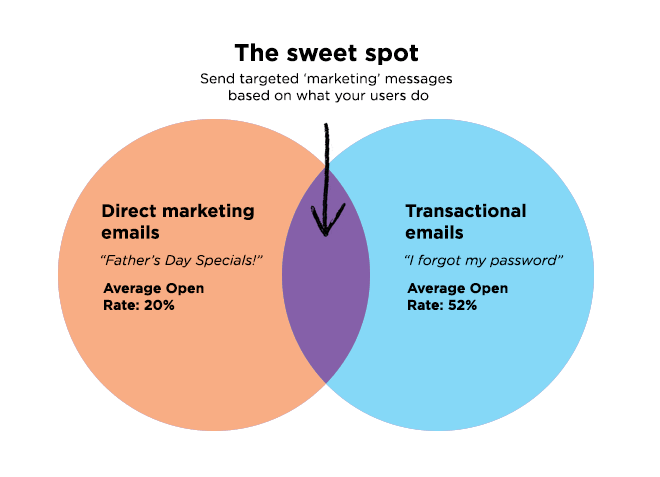
Potential Challenges and Their Solutions
Balancing Personalization with Scalability
One of the main hurdles in behavioral email segmentation is finding the sweet spot between personalization and scalability. As startups grow, personalizing content for an increasing number of segments can become resource-intensive and challenging to manage effectively.
Strategic Automation and Template Customization
To address this, leverage advanced email marketing automation tools that offer dynamic content insertion and template customization. This approach allows you to create a single email template that automatically populates with content specific to each recipient’s behavior and preferences, ensuring personalization at scale. Additionally, investing in machine learning algorithms can help predict the most relevant content for different segments, further automating the personalization process without sacrificing the personal touch.
Maintaining Data Hygiene
Another challenge is ensuring the cleanliness and accuracy of the data powering your segmentation. Outdated, incomplete, or inaccurate data can lead to misdirected marketing efforts, diminishing the effectiveness of your campaigns.
Continuous Data Validation and Cleaning Processes
Implement continuous data validation and cleaning processes to maintain high data quality. This includes setting up regular audits of your database to identify and correct inaccuracies, remove duplicates, and update outdated information. Utilizing data validation tools at the point of data entry, such as email verification on sign-up forms, can prevent bad data from entering your system. Emphasizing the importance of data hygiene across your organization will also help foster a culture of quality data management.
Navigating the Complexities of Behavioral Data Analysis
Analyzing behavioral data to extract actionable insights can be complex, requiring sophisticated tools and expertise. The sheer volume of data and the intricacies of customer behaviors can overwhelm traditional analysis methods.
Investment in Advanced Analytics Tools and Talent
To navigate these complexities, invest in advanced analytics tools that offer deep behavioral insights and predictive analytics capabilities. These tools can help you identify patterns and trends that might not be apparent through manual analysis. Additionally, consider hiring or partnering with data analysts or data scientists who specialize in consumer behavior analysis. Their expertise can transform raw data into strategic insights that drive your segmentation and personalization efforts.
Ensuring Email Deliverability
As you segment and personalize your emails, it’s vital to maintain high deliverability rates. Factors such as sender reputation, content relevance, and engagement rates all influence whether your emails reach the inbox or get trapped in spam filters.
Focus on Engagement and Relevance
To ensure deliverability, focus on enhancing engagement and relevance. This involves not only personalizing content but also optimizing send times based on each segment’s preferences and behaviors. Regularly review your email performance metrics to identify and address deliverability issues promptly. Engaging in best practices for email list management, such as segmenting inactive subscribers and offering easy unsubscribe options, can also help maintain a healthy sender reputation.
Adapting to Changing Consumer Behaviors
Consumer behaviors and preferences are not static; they evolve over time. A segmentation strategy that works today may not be as effective tomorrow, requiring startups to remain adaptable and responsive.
Embrace a Culture of Continuous Learning and Adaptation
To stay ahead of changing consumer behaviors, embrace a culture of continuous learning and adaptation within your organization. This includes regularly revisiting and revising your segmentation strategy based on ongoing data analysis and market research. Encourage feedback from customers to gain insights into shifting preferences and behaviors. By remaining flexible and open to change, you can ensure that your email marketing strategy continues to resonate with your audience, regardless of how their behaviors evolve.
By addressing these potential challenges with strategic foresight and innovative solutions, startup founders can navigate the complexities of behavioral email segmentation effectively. These strategies not only enhance the personalization and effectiveness of your email marketing efforts but also ensure long-term scalability and adaptability in a rapidly changing digital landscape.
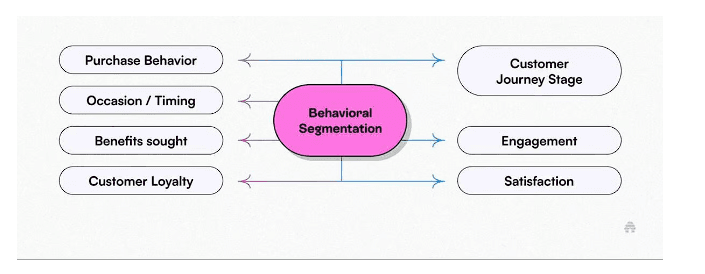
Wrapping it up
Behavioral email segmentation is more than just a marketing tactic; it’s a paradigm shift. By moving away from broad strokes and focusing on individual subscriber behaviors, businesses can craft compelling, personalized narratives. This not only drives better engagement but fosters a deeper brand-customer relationship.
In an increasingly digital age, the brands that stand out will be those that understand and cater to their audience’s evolving behaviors. With the right strategies, tools, and mindset, any business, whether a startup or an established enterprise, can harness the power of behavioral email segmentation for unprecedented success.
Read Next:
- How to Use Google Search Console for SEO Analysis
- Crawl Budget Optimization in SEO: What is it and why does it matter?
- How Startups Can Use SEO Competitive Analysis to Outrank Established Brands
- E-commerce SEO: The Complete Guide
- How to Use Email Marketing Automation for Drip Campaigns
- How to use EmailOctopus: An Explainer






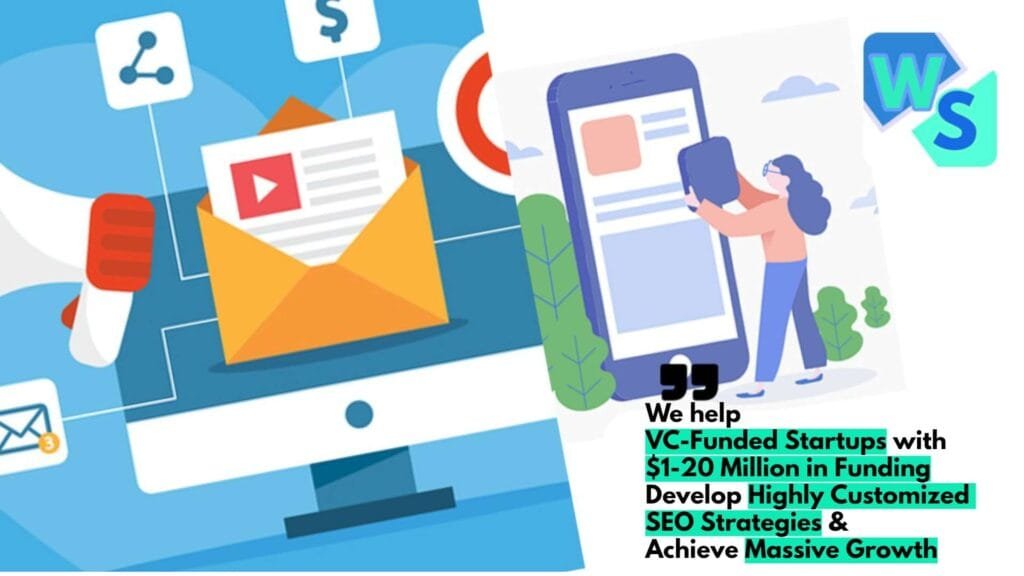













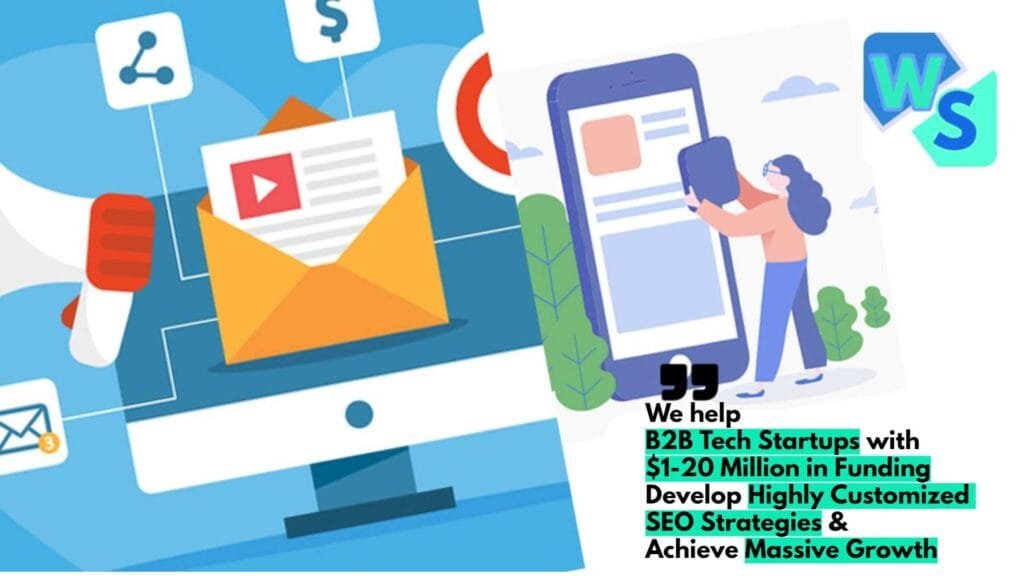

Comments are closed.